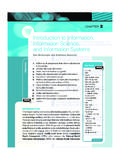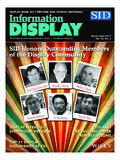Transcription of Information, Communications, and Technology (ICT) Skills ...
1 information , Communications, and Technology (ICT) Skills Curriculum Based on the Big6 Skills Approach to information Problem-Solving By Mike Eisenberg, Doug Johnson and Bob Berkowitz Revised February 2010. Permission is granted for educational use or Skills . They found that information Skills can be various information Technology Skills as part of the reprint of all or parts of this curriculum as integrated effectively when the Skills (1) directly learning process. long as the authors and Big6 are properly and relate to the content area curriculum and to The curriculum outlined in this document prominently credited. classroom assignments, and (2) are tied together in demonstrates how Technology literacy Skills can a logical and systematic information process model. There is clear and widespread agreement among the fit within an information literacy Skills context public and educators that all students need to be Schools that seek to move away from isolated [American Association of School Librarians, (1998), proficient Technology users.]
2 Technology literacy is information Technology Skills instruction will (2007); Association of College and Research among the attributes that appear in nearly every set also need to focus on both of these requirements. Libraries (2000)]. The baseline information of 21st Century Skills . However, while districts Successful integrated information Skills programs literacy context is the Big6 process (see sidebar and spend a great deal of money on Technology , there are designed around collaborative projects Eisenberg & Berkowitz, 1988, 1992, 1999, 2000, seems to be only a vague notion of what Technology jointly planned and taught by teachers and 2010). The various Technology Skills are adapted literacy really means. Can the student who uses library information and Technology professionals. from the International Society for Technology Technology well enough to play a game, send information Technology Skills instruction can and in Education's National Educational Technology e-mail or browse the Web be considered Technology should be embedded in such a curriculum.
3 Teacher- Standards for Students (2007) and the Mankato literate? Will a student who uses Technology in librarians, Technology teachers, and classroom Schools information Literacy Curriculum school only for running tutorials or an integrated teachers need to work together to develop units Guideline. Students might reasonably be expected learning system have the Skills necessary to survive and lessons that will include Technology Skills , to authentically demonstrate these basic Technology in our society? Is the ability to do basic word information Skills , and content-area Skills before graduation. processing sufficient for students entering the curriculum outcomes. Additional Technology literacy competencies that workplace or post-secondary education? A meaningful, unified information Technology may be relevant in some situations include Certainly not. Recent publications by educational literacy curriculum must be more than a laundry knowing: (1) the basic operation, terminology, associations advocate for a more meaningful use of list of isolated Skills , such as knowing the parts of and maintenance of equipment, (2) how to use Technology in schools (Partnership for 21st Century the computer, writing drafts and final products with Technology -assisted instructional programs, (3) the Skills , 2008.)
4 Educational technologists clearly a word processor, and searching for information on impact of Technology on careers, society, and culture describe what students should know and be able the Internet. (as a direct instructional objective), and (4). to do with Technology . They advocate integrating computer programming. While specific, articulated Skills are important for Technology Skills into the content areas, recognize students to learn, the laundry list approach does Defining and describing Technology Skills is only that Technology Skills should not be taught in not provide an adequate model for students to a first step to assure all our children become isolation, and affirm that separate computer classes . transfer and apply Skills from situation to situation. proficient information and Technology users. Other do not allow students to apply Technology Skills in These curricula address the how of Technology critical elements will include a teacher-supported meaningful ways.
5 There is increasing recognition use, but rarely the when or why. Students may scope and sequence of Skills , well designed projects, that the end result of Technology literacy is not learn isolated Skills and tools, but they would still and effective assessments. Equally essential is knowing how to operate Technology , but rather lack an understanding of how those various Skills fruitful collaboration among classroom teachers, to use Technology as a tool for organization, fit together to solve problems and complete tasks. teacher librarians, and Technology teachers in order communication , research, and problem solving. Students need to be able to use Technology tools to present students with a unified and integrated This revised focus on Technology as a tool is with flexibility, creativity and a genuine purpose. All approach to ensure that all children master the an important shift in conceptual approach and learners should be able to recognize what goals they Skills they will need to thrive in an information -rich instructional emphasis.
6 Need to accomplish, determine whether Technology future (Eisenberg & Lowe, 1999). Moving away from teaching isolated Technology will help them to do so, and then be able to use The information , Communications, and Skills and thereby moving toward an integrated the Technology as part of the process to accomplish Technology (ICT) Skills for information approach is an important step that takes a great their task. Individual Technology Skills take on a Problem Solving curriculum presented below deal of planning and effort. Fortunately, we have new meaning when they are integrated within this defines Technology capabilities and identifies a model for doing so. Over the past 30 years, type of information problem-solving process, and associated Skills based on the Big6 Skills Approach. library information and Technology professionals students develop true information Technology The Curriculum describes levels of Technology have worked hard to move from teaching isolated literacy because they have genuinely applied proficiency, and in so doing, promotes the Skills and library Skills to teaching integrated information concepts basic to information and Technology .
7 In 24 Library Media Connection K-5 6-8 9-12. May/June 2010. an information society, it is essential that students 2. information Seeking Strategies multimedia Technology stations, online terminals, are technologically productive and able to solve scanners or digital cameras). Once the student formulates the information information problems effectively and efficiently. B. Locate and use appropriate information problem, he or she must consider all possible This curriculum requires more than teaching information sources and develop a plan to find the Technology resources and systems available computer Skills , Technology hardware, and sources. Students will be able to: throughout the school including resources and software programs in an isolated approach. An Technology available through intranets or local A. Assess the relevance and credibility of various area networks ( , full-text resources, productivity effective Technology curriculum must be integrated types of electronic resources for data gathering software, scanners, or digital cameras).
8 Across content areas and grade levels to improve including databases, commercial and Internet the learning process. Technology is successfully C. Locate and use appropriate information online resources, electronic reference works, integrated when it seamlessly supports curricular Technology resources and systems available beyond community and government information , or other goals. Students learn and refine their Technology the school through the Internet ( , newsgroups, forms of electronic resources ( , resources in Skills when they work on projects that require them mail lists, WWW sites, ftp sites, online public various media or graphics formats). to solve problems and make decisions. access library catalogs, blogs, wikis, Nings, social B. Assess the need for and relevance of primary networking sites, commercial article databases and information , resources including interviews, surveys, experiments, online services, and other community, academic, Communications, and and documents that are accessible through and government resources).
9 Technology (ICT) Skills electronic means. D. Know the roles and Technology expertise of for information Problem C. Identify and apply specific criteria to evaluate people who work in the school information and Solving: A Curriculum computerized electronic resources. Technology program and elsewhere who might Based on the Big6 Approach D. Identify and apply specific criteria to construct provide information or assistance. Know how to meaningful original data gathering tools such as access that assistance both in person and virtually. 1. Task Definition online surveys, electronic interviews; or scientific data E. Use electronic reference materials ( , electronic The first part in the information problem-solving gathering tools such as probes, meters, and timers. encyclopedias, ebooks, dictionaries, biographical process involves the ability to recognize that an E. Assess the value of e-mail, online reference sources, atlases, geographic databanks, information need exists, to define the problem, and to discussions, real-time communications, desktop thesauri, almanacs, fact books) available through identify the types and amount of information needed.
10 Teleconferencing, and collaborative writing, intranets or local area networks, stand-alone In terms of Technology , students will be able to: production, and editing tools on the Internet and workstations, commercial online vendors, or A. Communicate with teachers regarding local area networks as part of a search of the current the Internet. assignments, tasks, and information problems literature or in relation to the information task. F. Use the Internet or commercial Technology using e-mail; online discussions ( , listservs, F. Use systems to generate modifiable flow charts, networks to contact experts and help and threaded Web-based discussions, newsgroups); time lines, organizational charts, project plans referral services. real-time communications ( , instant messaging (such as Gantt charts), and calendars that will help G. Conduct self-initiated electronic surveys services, chat rooms, IP telephony); desktop the student plan and organize complex or group through e-mail, listservs, newsgroups and online teleconferencing; and shared work spaces on the information problem-solving tasks.




